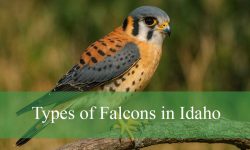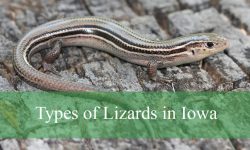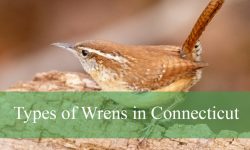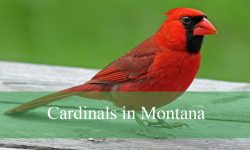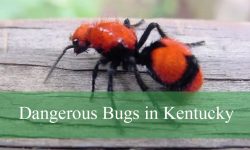There are many types of Orioles in North America, each with its own unique colors and characteristics. From the vibrant Altamira Oriole in Texas to the more widespread Baltimore Oriole, birdwatchers can spot various species across different regions.
Understanding the different types of Orioles in North America not only helps in identification but also adds to the enjoyment of observing these beautiful birds.
The following article will guide you through exploring 10 types of Orioles in North America, detailing their characteristics and how to identify them.
Different Types of Orioles in North America
Streak-Backed Oriole
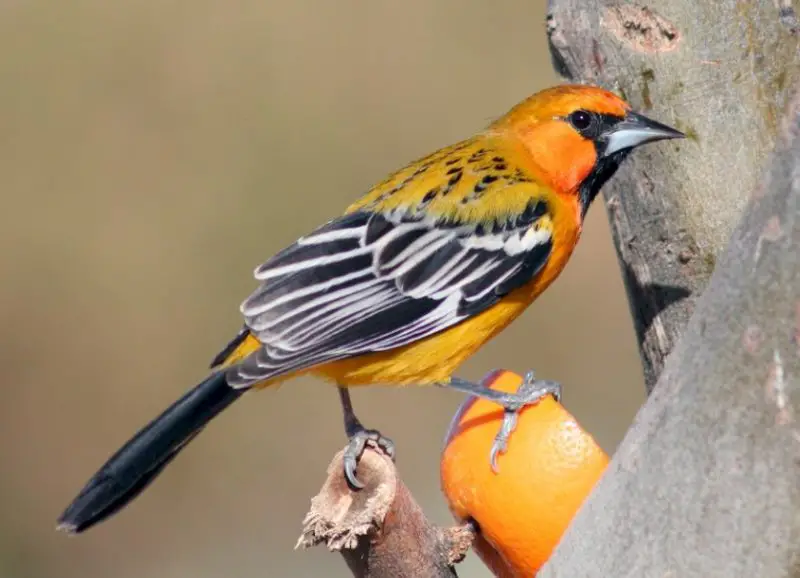
The Streak-Backed Oriole is a medium-sized bird, standing around 7.9 inches tall with a wingspan of 9 to 10 inches. Weighing between 2.5 and 3 ounces, this oriole is named for the black streak running down its wings and tail. It has a vibrant orange head and body, with black markings restricted to the throat and bib. In tropical regions, males and females look almost identical, though females in northern areas may have more muted colors.
Native to Central America, Streak-backed Orioles prefer tropical environments but can also be found in southern Arizona and California during the warmer months. In these drier climates, their diet mainly consists of insects, though they may also forage for fruit. During the breeding season, these orioles search for taller trees to build their nests, favoring higher branches for safety.
Streak-backed Orioles are known for their expert nest-building abilities, weaving intricate basket-like nests on the outer edges of tree branches. This behavior helps protect their nests from predators, as the lighter branches are difficult for larger animals to navigate. These birds are tropical beauty and a delight for birdwatchers in the southwestern U.S. during migration season.
Hooded Oriole
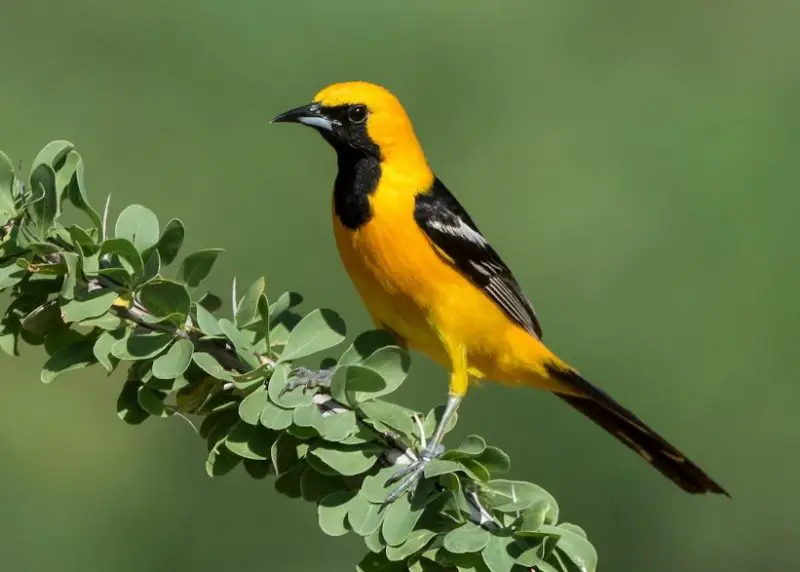
The Hooded Oriole is a slender, longer oriole, typically measuring between 7.1 and 7.9 inches in length with a wingspan of 9.1 to 11 inches. Weighing only about 0.8 ounces, it is one of the lighter orioles found in the United States. Its name comes from the distinctive black face mask that contrasts sharply with its bright orange body. Black wings with white wing bars further highlight its vibrant appearance.
Females, however, lack the black face mask and are instead colored in a yellow-olive hue with similar white wing bars. The Hooded Oriole’s song is quite erratic, switching between high-pitched calls and chattering, sometimes even mimicking other birds, such as the Gila Woodpecker in Southern California and Arizona.
Hooded Orioles breed in southern Arizona and California, where they build their nests in palm trees. Often referred to as the “palm-leaf oriole,” they weave intricate basket-like nests from plant and grass fibers under palm leaves, providing protection from predators. Their diet consists mainly of insects due to the arid Southwest climate, but they will also seek out fruits and nectar when available. Offering jelly or nectarines can attract these shy birds to backyard feeders.
Orchard Oriole
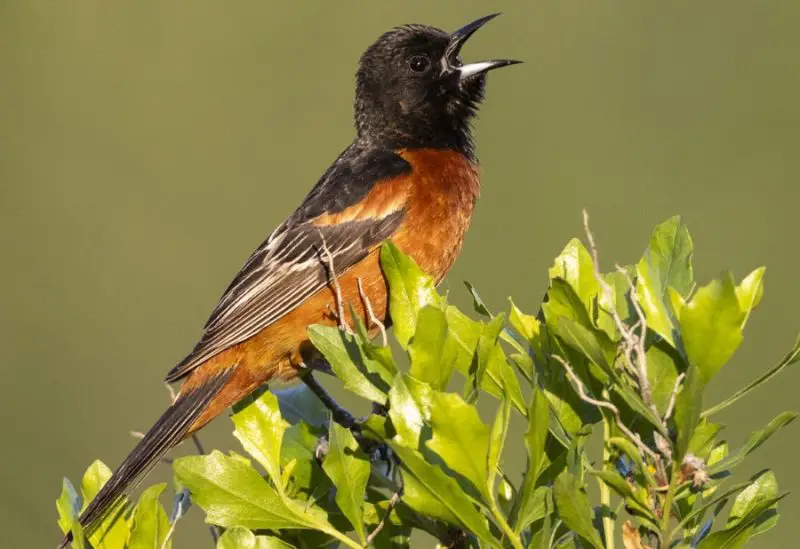
The Orchard Oriole is a small bird, slightly larger than a sparrow, measuring 5.9 to 7.1 inches in length with a wingspan of 9.8 inches. Weighing between 0.6 and 1 ounce, it is one of the lighter orioles. Unlike other orioles, Orchard Orioles don’t display the typical bright orange coloring. Instead, males have a reddish-brown chest, with a black head and a reddish-orange patch at the bend of their wings.
Female Orchard Orioles differ greatly from the males, as they are primarily olive-yellow with white wing bars being their only similarity to the males. Their whistling song is often mistaken for that of an American Robin, but their unique chattering call helps distinguish them.
Orchard Orioles are commonly found in open woodlands east of the Rocky Mountains during their short breeding season. They migrate back to Central America in late summer, earlier than most migratory birds. Despite their smaller size, they often cohabitate with larger oriole species like the Baltimore or Bullock’s Orioles, using their neighbors’ louder calls to help deter predators.
Their diet shifts from insects during the breeding season to fruit and nectar as winter approaches, which prompts their early migration. Offering nectar or fruit at feeders can attract these more reserved orioles to backyards during the spring and summer months.
Scott’s Oriole
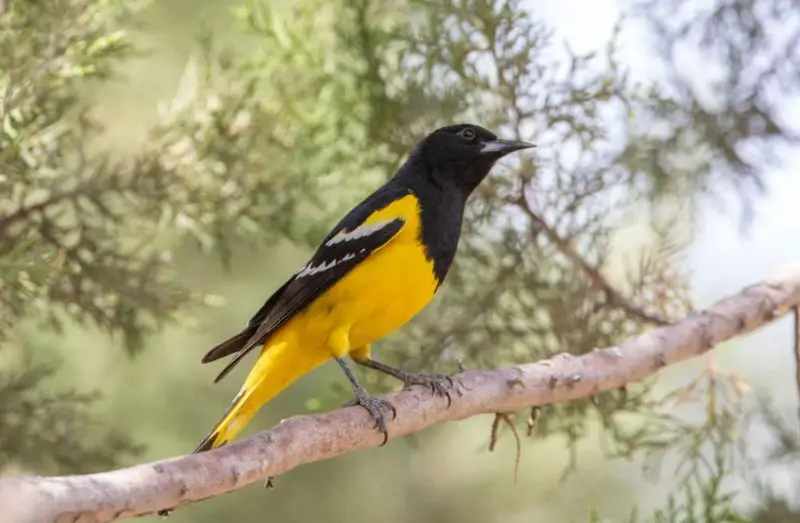
The Scott’s Oriole is a prominent resident of the southwestern United States, measuring about 9.1 inches in length with a 12.6-inch wingspan. Weighing between 1.1 to 1.4 ounces, this oriole stands out with its striking yellow belly and black head, back, and wings. Males feature the classic white wing bars, which contrast with their dark upper body and lemon-yellow underside.
Females are less vibrant, displaying a duller yellow shade with brownish tones throughout their body. Like the males, they have the distinctive white wing bars but lack the sharp contrast between the yellow and black.
The Scott’s Oriole has a distinct “chuk” call, which is easier to recognize than their song, often confused with the Western Meadowlark’s tune. They are usually found in areas where Yucca plants thrive, as they rely heavily on these plants for food and nesting materials. Scott’s Orioles use the fibers from Yucca to weave their nests and search the plant for insects and fruit.
One unique behavior of this species is its ability to consume Monarch Butterflies. Despite the toxins Monarchs absorb from Milkweed, which deters most predators, Scott’s Orioles have adapted to identify butterflies with lower toxin levels, allowing them to include this otherwise poisonous insect in their diet.
Altamira Oriole
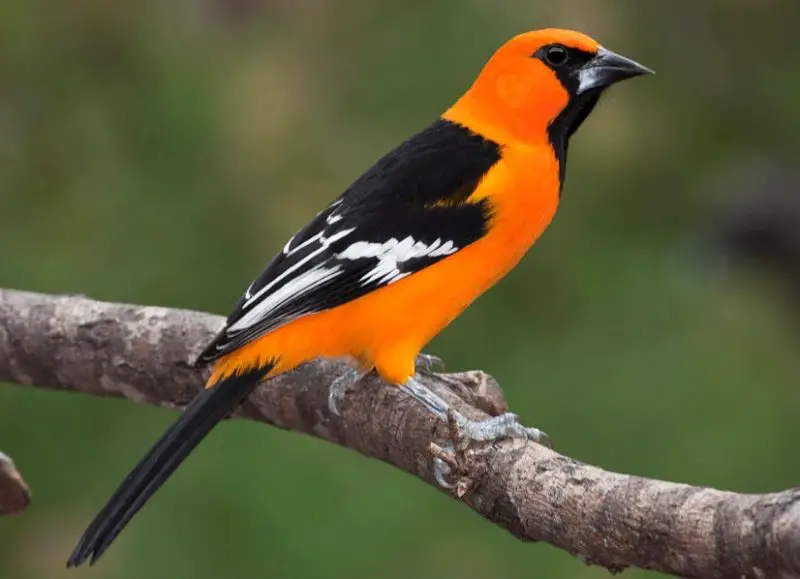
The Altamira Oriole is the largest species of oriole found in North America, measuring between 8.3 to 9.1 inches in length, with a wingspan of 14.2 inches. They weigh 1.7 to 2.3 ounces, making them noticeably bigger than other orioles like the Hooded Oriole, though their similar color pattern often leads to confusion.
Both male and female Altamira Orioles have bright orange bodies and heads, with black wings and a distinctive black mask. Males tend to have slightly brighter faces. A notable feature is the thin orange patch on their shoulders, which can help with identification.
Their most common vocalization is a sharp “ike” call, especially during breeding season when communication between pairs increases. They also produce a chattering call and have a melodious whistling song, which adds to their charm.
Altamira Orioles are primarily found in the Rio Grande Valley and the southern tip of Texas along the Gulf Coast, where they reside year-round. During the breeding season, they weave large, pouch-like nests in the woodlands, with some nests reaching up to 2.5 feet in length.
Known for their sweet tooth, Altamira Orioles are frequent visitors to backyards with fruit, flowers, or hummingbird feeders, making them a delightful presence for bird enthusiasts in the region.
Audubon’s Oriole
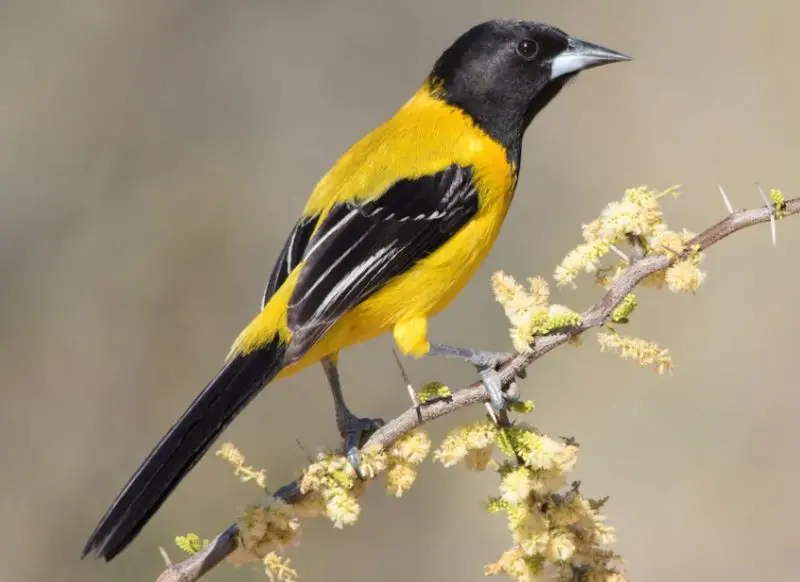
The Audubon’s Oriole, similar in size to the Altamira Oriole, measures between 7.5 to 9.4 inches in length, with a wingspan of 14.2 inches. Weighing 1.1 to 1.9 ounces, this species shares many traits with its larger relatives but has unique characteristics.
Both male and female Audubon’s Orioles look alike, with striking black heads and chests. A distinctive yellow-orange band runs along their shoulders, setting them apart from other orioles. Their wings and tails are a deep black, contrasting with the bright orange back visible beneath the wings.
Audubon’s Orioles have a sharp, nasally “nyyeaah” call, which is quite different from the calls of other orioles in their range, such as the Altamira. Their calls are often scattered among various contact calls, especially during communication.
This species is primarily found in the southernmost parts of Texas, preferring woodlands. Unlike many other orioles, Audubon’s Orioles often forage on the ground and in low bushes for insects and fruit rather than in tall trees.
A fascinating trait of this species is its nests, which are frequently targeted by Bronzed Cowbirds. Over half of the nests surveyed in southern Texas were found to contain the eggs of these parasitic birds.
Baltimore Oriole
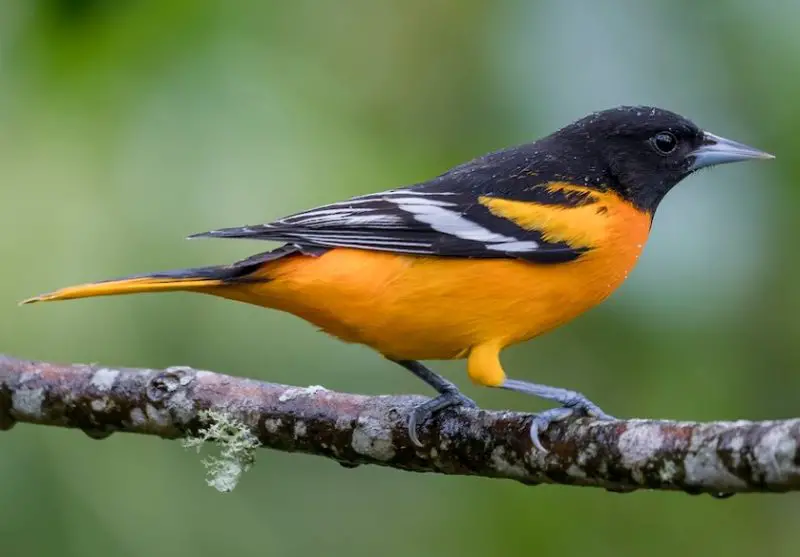
The Baltimore Oriole is a vibrant bird commonly found in the eastern United States. Measuring between 6.7 and 7.5 inches tall with a wingspan of 9.1 to 11.8 inches, it’s slightly smaller than a Robin. The male is easy to recognize with its striking orange body and black head, while the female is more subdued in color, sporting yellow-orange feathers and grayish tones on the head and wings. Their melodious, flute-like song, consisting of short whistles, is often heard during the breeding season as males establish their territories.
Baltimore Orioles are migratory, breeding in the northeastern U.S. and expanding into plains and southern regions during migration. In winter, they usually head to Central America, but some have been seen wintering in the Mid-Atlantic states, where they rely on feeders for fruit and insects. The bird’s name comes from the Baltimore family in England, whose family crest shares the bird’s iconic orange and black colors. This connection led to the oriole being named after the city of Baltimore, Maryland.
Bullock’s Oriole
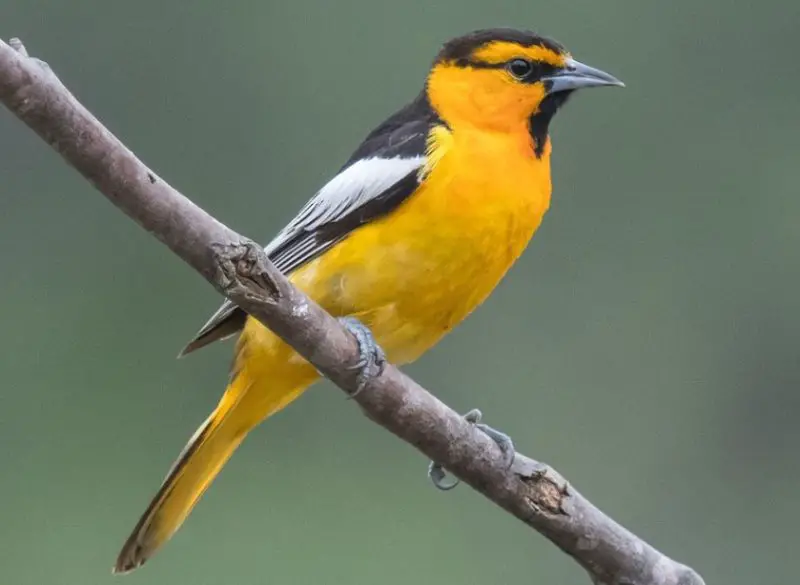
The Bullock’s Oriole is a brightly colored bird, measuring between 6.7 and 7.5 inches in height with a wingspan of 12.2 inches. Weighing around 1 to 1.5 ounces, these small birds are known for their striking appearance, especially the males. Male Bullock’s Orioles have a vivid flame-orange body and face, along with a sharp black cap and throat, making them easy to identify. Both males and females have distinctive white streaks along the edges of their wings. Females, however, are less vibrant, featuring a duller orange-yellow body and lacking the bold black markings.
Their song is unique, characterized by short, rich squeaks resembling a dog’s squeaky toy, interrupted by brief rattles. These birds are most commonly found in the western United States, preferring open woodlands during the breeding season. Afterward, they migrate south to Mexico for winter, rarely appearing in the northern desert areas post-migration.
Bullock’s Orioles primarily feed on insects like grasshoppers but will also enjoy fruit, especially if placed on a feeder. Known for their intricate nest-building, females weave gourd-shaped nests up to 15 inches deep in tree branches, ensuring safety for their young. These orioles are also comfortable around people and can be attracted to sugar-water or fruit feeders.
Spot-Breasted Oriole
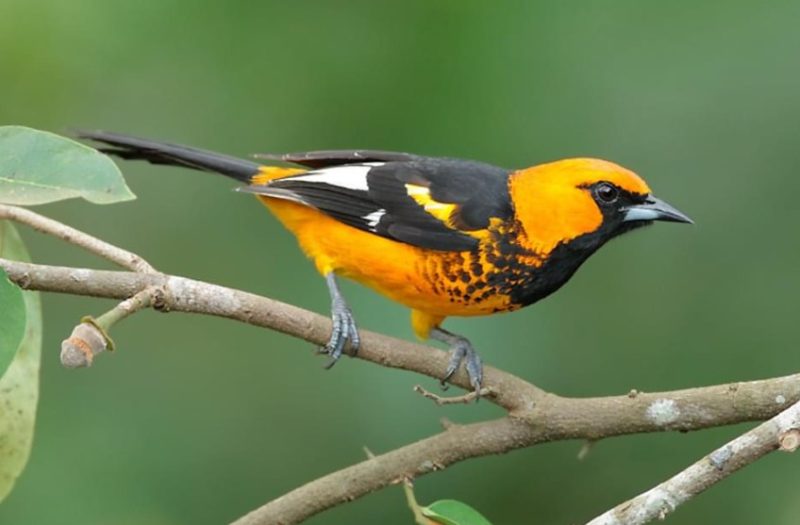
The Spot-Breasted Oriole is one of the least common orioles in North America, standing at 8.3 to 9.4 inches tall and boasting a wingspan of 13 inches. These long-bodied birds weigh around 1.8 ounces. Unlike many orioles, both male and female Spot-breasted Orioles share similar bright orange coloring. What sets them apart is the distinctive black bib and tail, along with black spots on their chest near the throat.
Their song is not particularly unique, but it can be recognized by its slow and deliberate whistles. Birdwatchers should listen closely to the trees for these subtle vocalizations. Unlike most orioles, the Spot-breasted Oriole is not native to North America. Its range is limited to the southern tip of Florida, where it was accidentally introduced in the 1940s.
These birds remain year-round in southern Florida, often residing in suburban areas. Their population has thrived in this region, thanks to the abundance of tropical fruit available. While their diet is plentiful, unseasonably cold winters pose a significant threat to their population. Nonetheless, the Spot-breasted Oriole continues to be a unique and vibrant sight for birdwatchers in South Florida.

